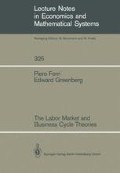Abstract
The previous chapters examined two models of wage-price spirals, one of which converges to equilibrium, the other tends to explode. The latter is capable of generating an explosive-inflationary situation whenever the target real demand is rising at a rate greater than productivity growth. Since explosive behavior is rarely observed, it has been argued that such a model is fundamentally incorrect. But the very rapid changes in prices and wages that have been observed (e.g. in the 1970s) have presented difficulties for models that are strongly constrained so as not to produce unacceptable behavior in the long run.
Access this chapter
Tax calculation will be finalised at checkout
Purchases are for personal use only
Preview
Unable to display preview. Download preview PDF.
Reference
For a discussion of these points, see Sylos Labini (1958) and Kalecki (1971) and Roncaglia (1988).
The impact of productivity changes can have a much wider set of implications. For instance, the process of wage determination or industrial relations can undergo substantial changes according to the nature of technical change. More generally, the literature refers in these cases to the concept of long waves. For a discussion, see Schumpeter (1939) and Freeman (1982).
Watanabe (1982) favors this hypothesis.The negative impact of inflation on investment is supported by a study of Wadhwani (1987). More in general, one has to consider both the impact of price changes and the role of the rate of changes of inflation. For a discussion, see Hicks (1939), Tobin (1975) and Reichlin (1987).
For a discussion of these points, see Blad-Zeeman (1982).
Author information
Authors and Affiliations
Rights and permissions
Copyright information
© 1989 Springer-Verlag Berlin Heidelberg
About this chapter
Cite this chapter
Ferri, P., Greenberg, E. (1989). A Regime Switching Model. In: The Labor Market and Business Cycle Theories. Lecture Notes in Economics and Mathematical Systems, vol 325. Springer, Berlin, Heidelberg. https://doi.org/10.1007/978-3-662-00831-7_8
Download citation
DOI: https://doi.org/10.1007/978-3-662-00831-7_8
Publisher Name: Springer, Berlin, Heidelberg
Print ISBN: 978-3-540-50866-3
Online ISBN: 978-3-662-00831-7
eBook Packages: Springer Book Archive

